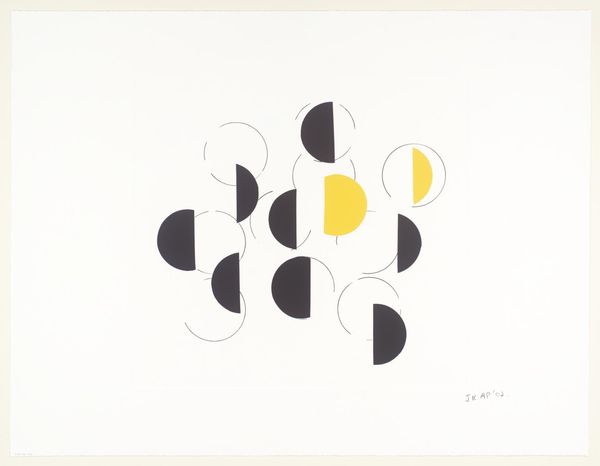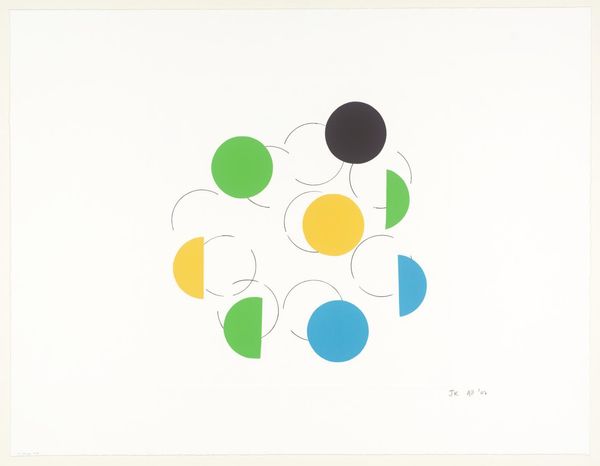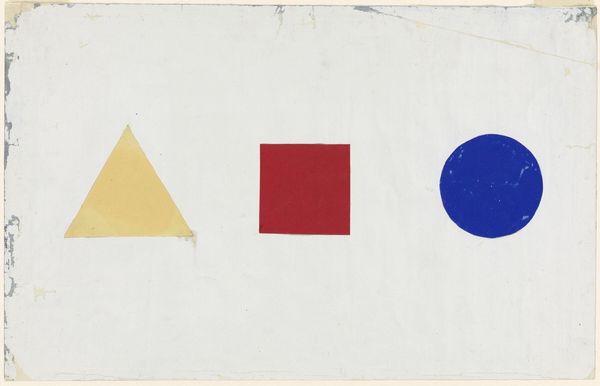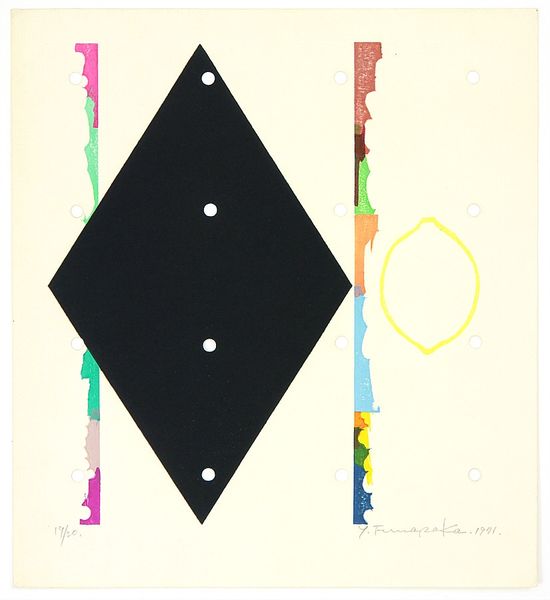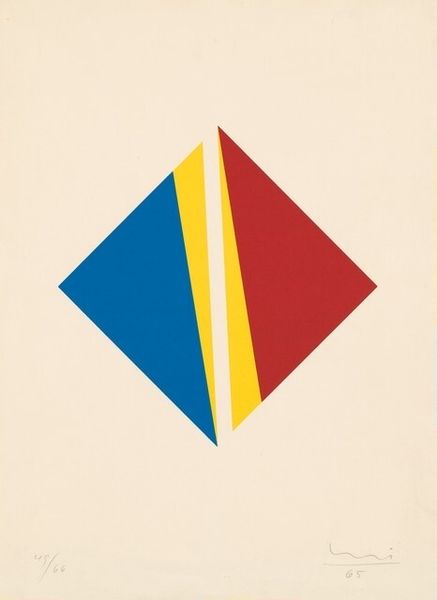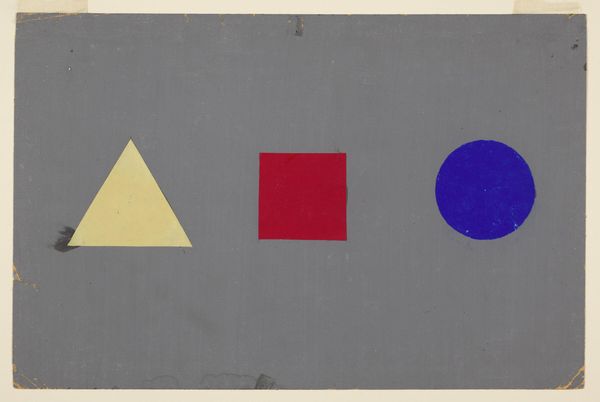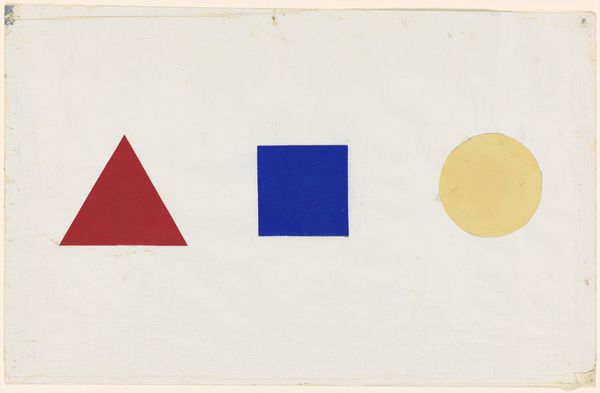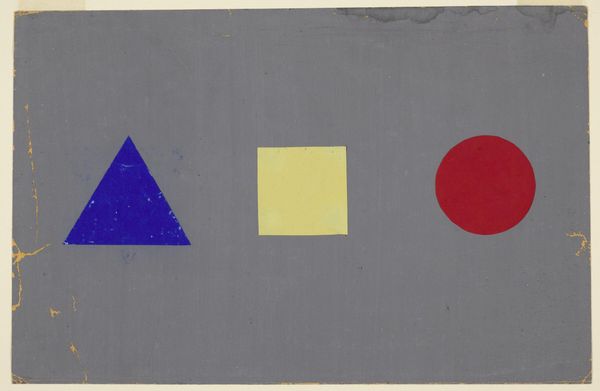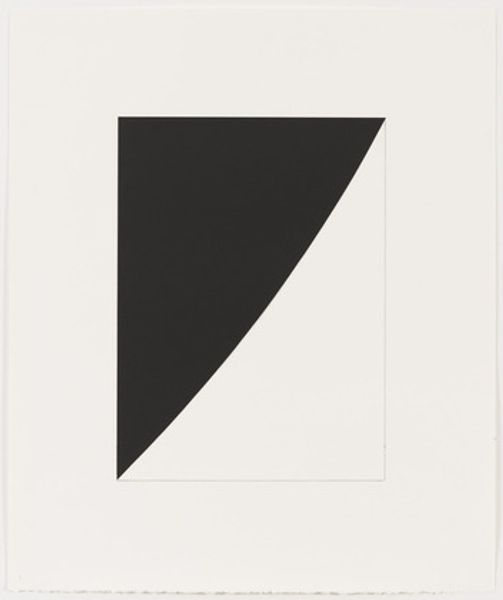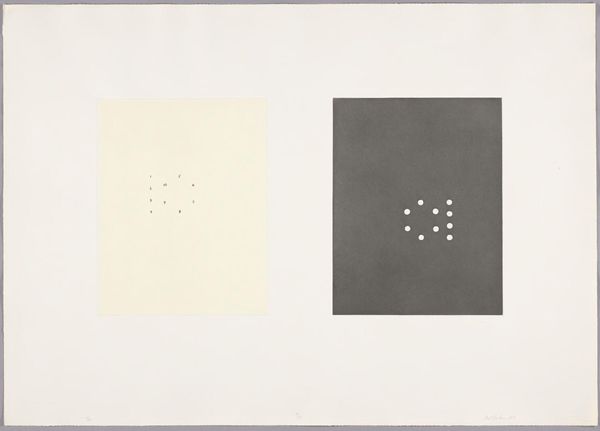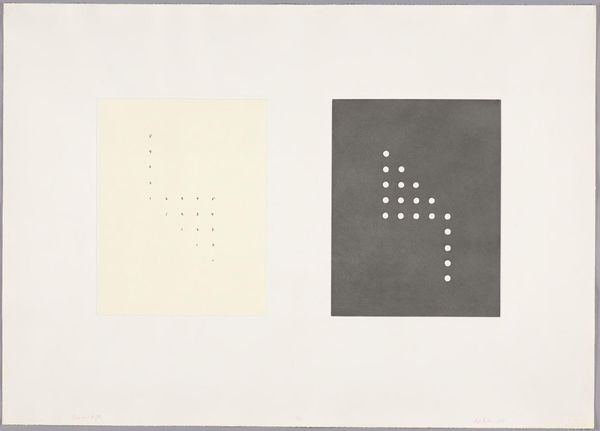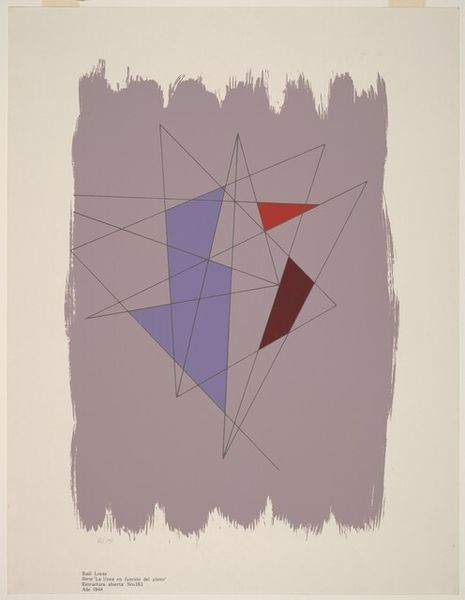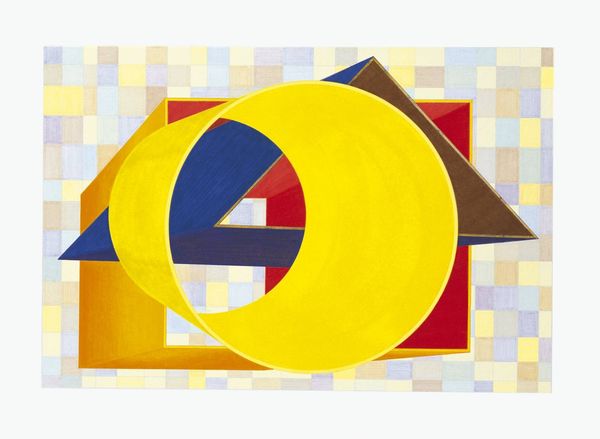
Dimensions: image: 371 x 362 mm
Copyright: © The estate of Justin Knowles/DKRT Investments Corp. | CC-BY-NC-ND 4.0 DEED, Photo: Tate
Curator: Justin Knowles' "S.28.02" features four yellow triangles encircling a single black one. What do you make of it? Editor: Initially, I’m struck by the stark contrast. The golden triangles almost seem to guard the darker figure, creating a visual tension, a sense of exclusion perhaps? Curator: Knowles' works often explore the intersection of mathematical systems and artistic expression. The strategic placement of these geometric forms invites us to consider societal structures and the individual's place within them. Editor: Right, and triangles themselves have a rich symbolic history, representing everything from stability to divinity. The color amplifies this, yellow often signifies intellect and energy, while black embodies the unknown. Curator: This piece, acquired by the Tate, highlights the shift in the mid-20th century toward abstraction. Galleries began embracing non-representational art, challenging established notions of what constitutes art. Editor: Absolutely, and even today, it prompts us to question the relationship between order and chaos, light and darkness, belonging and alienation. Curator: A stimulating piece, prompting reflection on both art history and our own perceptual frameworks. Editor: Indeed, I keep wondering, is the black triangle protected, or trapped?
Comments
Join the conversation
Join millions of artists and users on Artera today and experience the ultimate creative platform.
tate 6 months ago
⋮
Although finished works in their own right, these prints can also be thought of as working models for larger paintings or three-dimensional objects. Knowles overriding concerns were with form, dimension and space, and he realized his works through the application of various systems to a set of ideas, what he called ‘artform concepts’. Knowles often used the same concept, expressed in a combination of forms, to make works in different materials and on different scales, sometimes making work specific to a particular site. S.157iv.01 2002 (Tate P78738) for example, uses similar forms to those in the installation, D.156iv.01/02 2001-2 (National Gallery of Prague).
